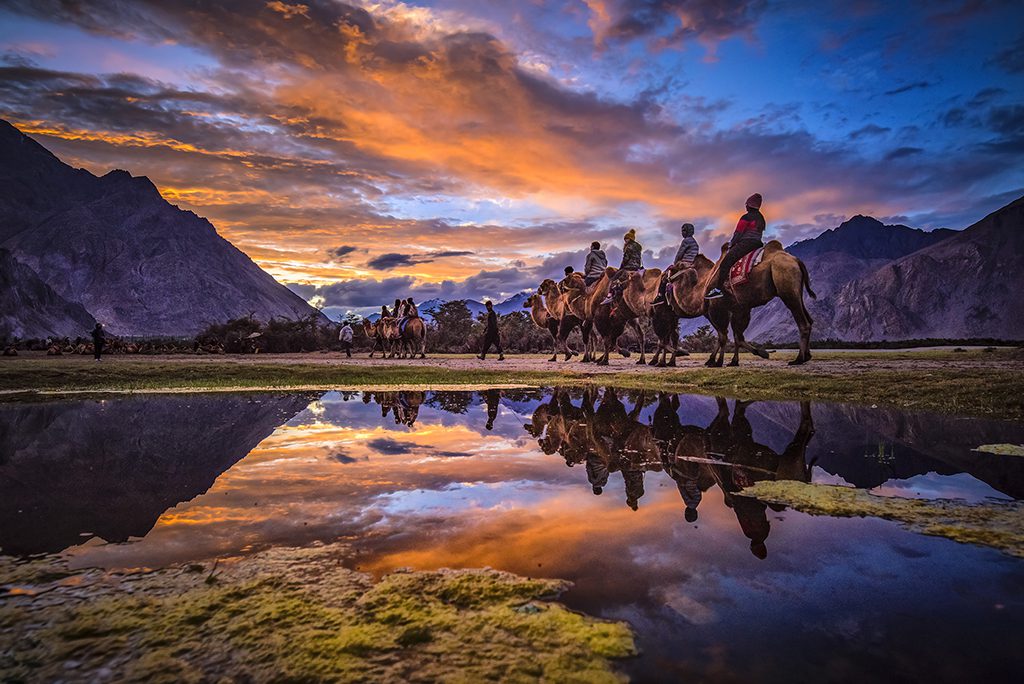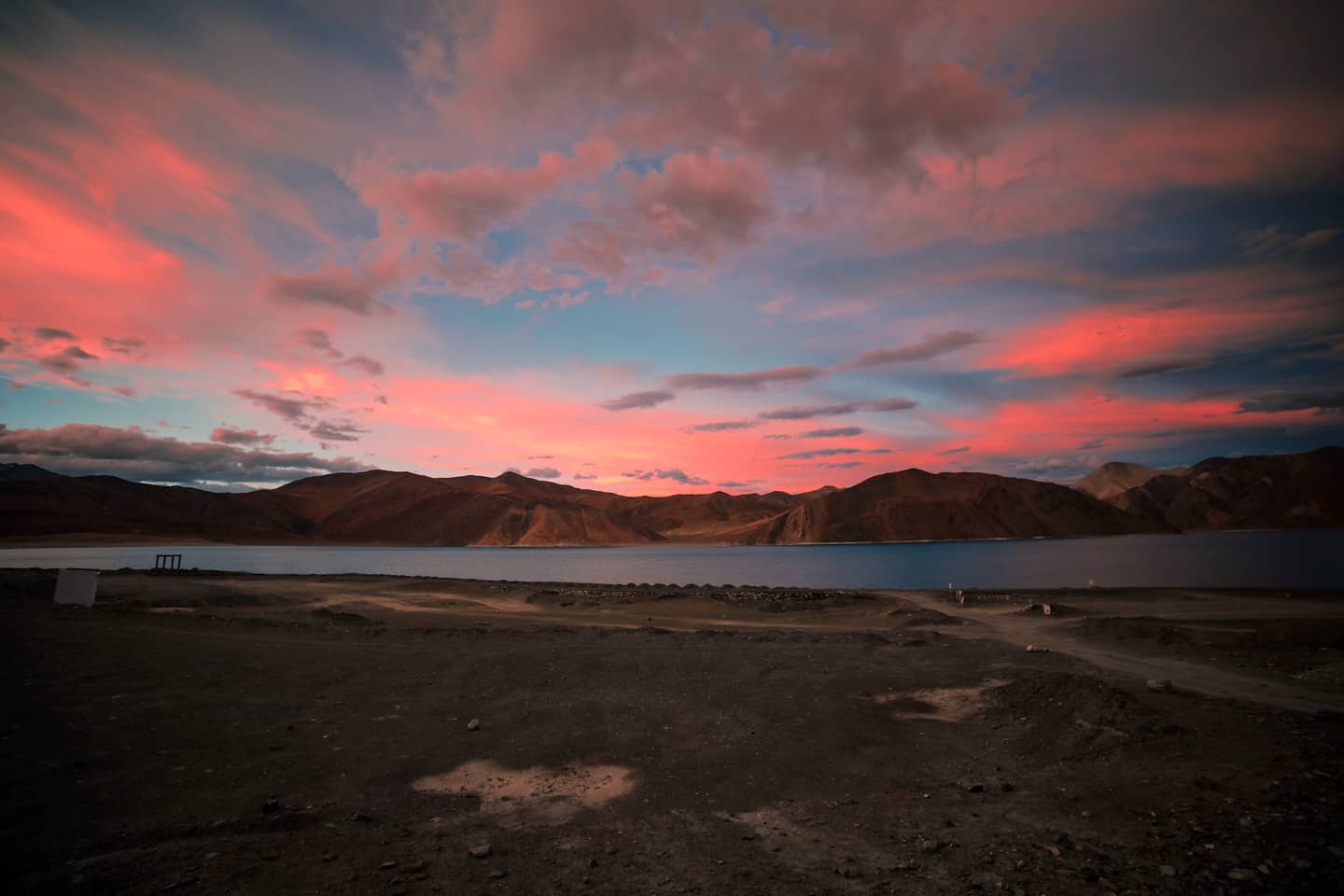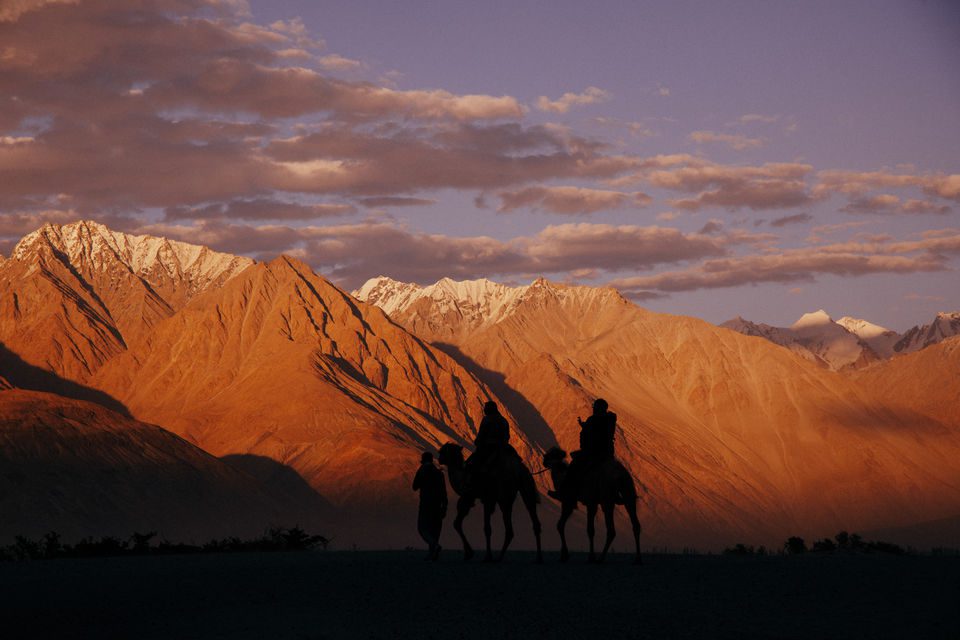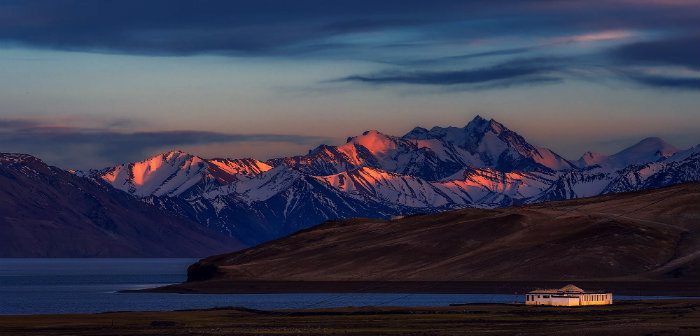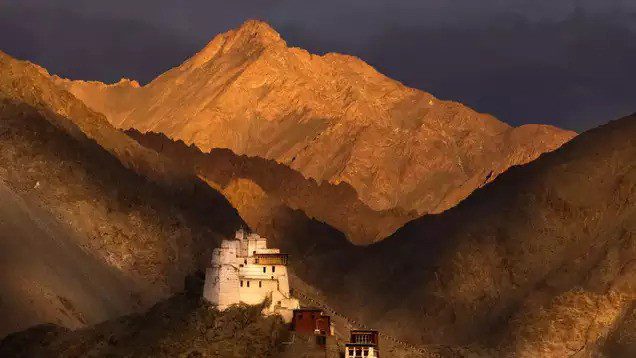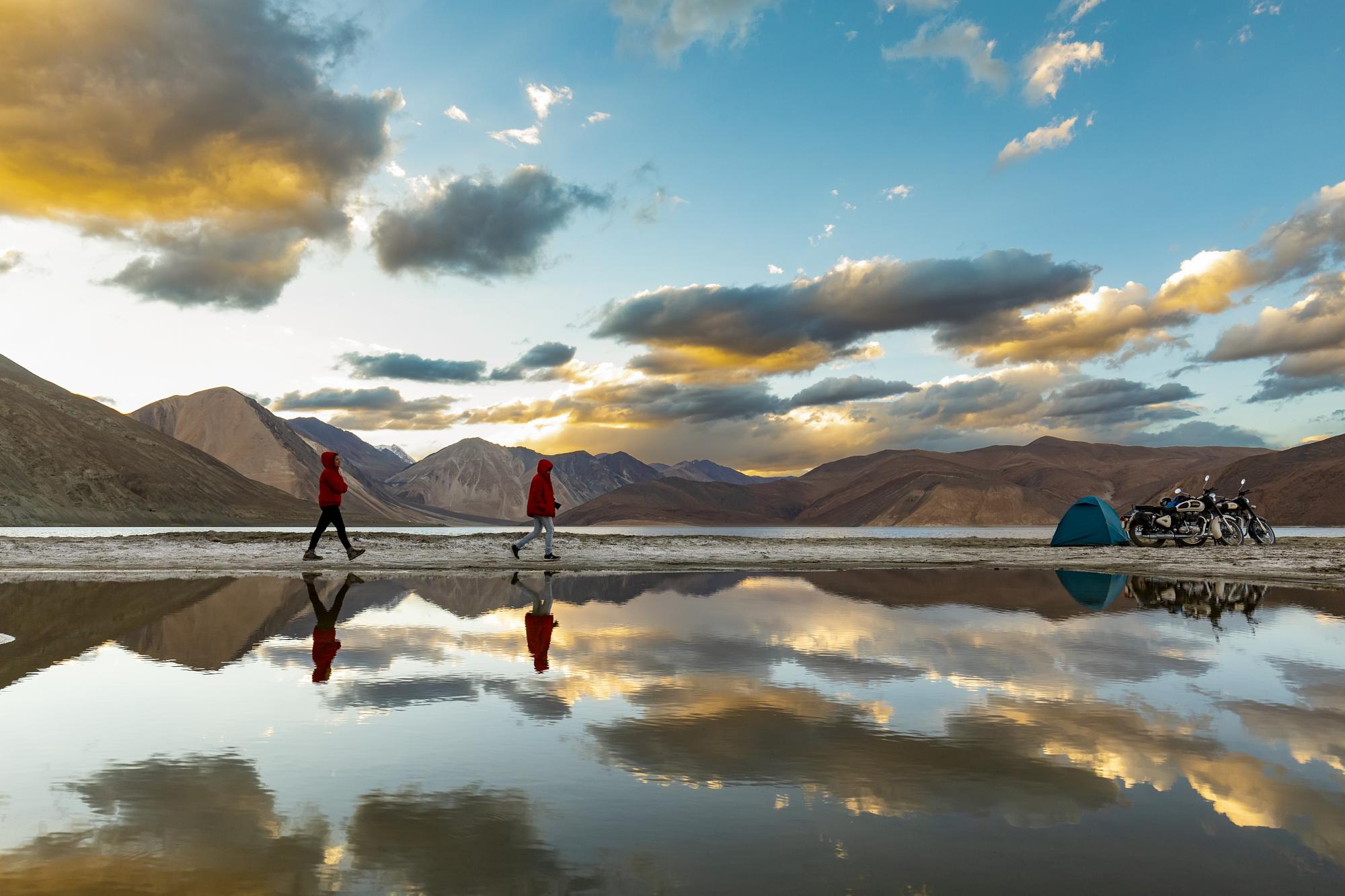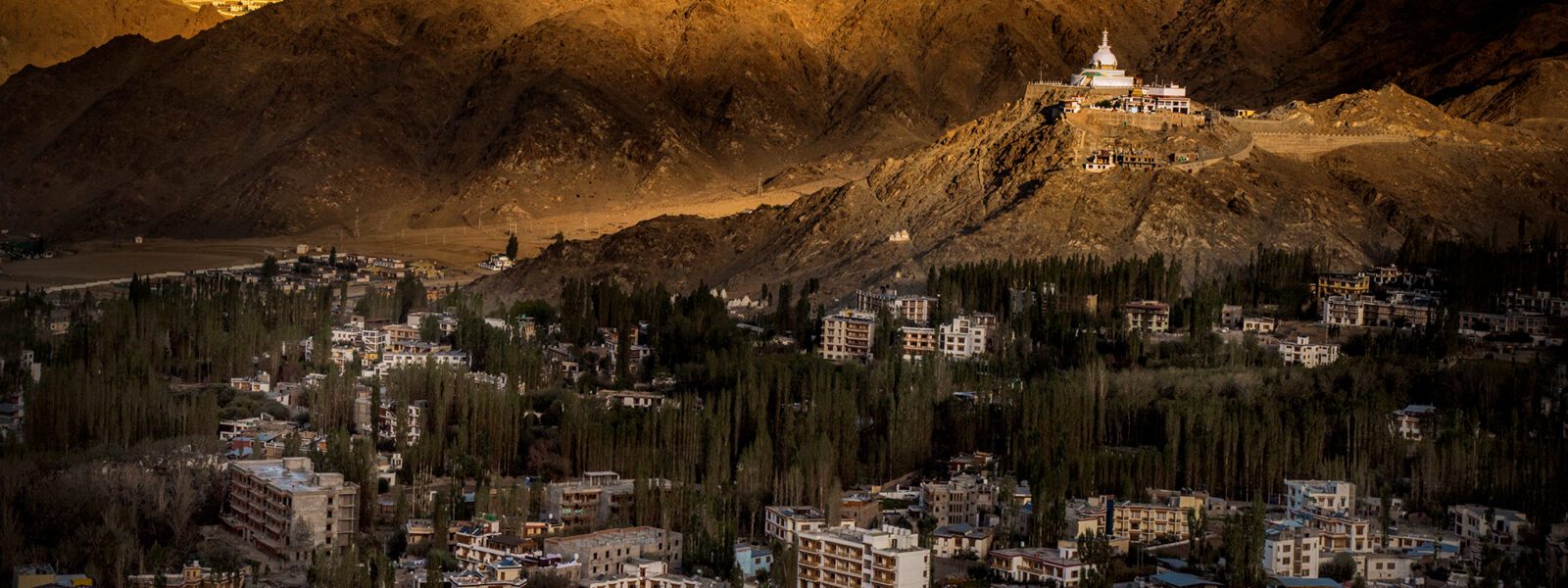Photography in Ladakh: How to Capture the Best Sunrise and Sunset Shots
Ladakh is a dream destination for photographers, with its breathtaking landscapes, crystal-clear lakes, snow-capped mountains, and ancient monasteries. The region is known for its dramatic sunrises and sunsets, which offer some of the most stunning natural lighting conditions you’ll find anywhere in the world. However, photographing in Ladakh can be challenging due to the high altitude, harsh weather, and tricky lighting at different times of the day. In this guide, we’ll explore how to capture the best sunrise and sunset shots in Ladakh, including tips on timing, location, equipment, and technique.
—
Why Timing is Critical for Capturing Sunrise and Sunset in Ladakh
The Importance of Timing
Timing is one of the most critical factors when it comes to photographing sunrises and sunsets. The golden hour—the first hour after sunrise and the last hour before sunset—provides soft, warm lighting that’s perfect for photography. In Ladakh, the light during these hours can be especially dramatic, highlighting the rugged terrain and creating deep contrasts between the shadows and illuminated areas. Arriving early is key, as it gives you time to set up your equipment, find the best composition, and adjust your settings based on the changing light.
How Light Changes from Sunrise to Sunset
The quality of light changes significantly between sunrise and sunset. At sunrise, the light tends to be cooler and softer, while at sunset, it often has a warmer, more golden tone. Knowing how to use these changes to your advantage can make your photos more dynamic. For instance, sunrise shots in Ladakh can highlight the pristine snow-capped peaks, while sunset shots can bring out the rich reds and oranges of the barren mountains and cliffs.

—
Top Spots for Sunrise Photography in Ladakh
Ladakh offers a variety of unique locations for photographing sunrises, each offering its own charm. Below are some of the best spots you should consider when planning your sunrise photography.
1. Pangong Lake Sunrise Photography
One of the most iconic locations in Ladakh, Pangong Lake offers unparalleled beauty during sunrise. The still waters of the lake reflect the mountains and sky, creating a perfect mirror effect. The early morning light often casts a pinkish hue across the lake, adding to the surreal landscape.
– Best time to shoot: Arrive about 30 minutes before sunrise to capture the first light hitting the mountains and reflecting on the water.
– Camera settings: Keep a low ISO (100–200) to avoid noise, use a small aperture (f/8–f/11) for a deep depth of field, and experiment with a slow shutter speed to capture the calm water.

2. Nubra Valley Sunrise
Known for its cold desert landscape, Nubra Valley is another fantastic spot for sunrise photography. The valley offers a unique opportunity to capture the sun rising over the sand dunes with the snow-capped Karakoram Range in the background.
– Best time to shoot: Early morning, just as the first rays of light hit the dunes and mountains.
– Composition tips: Frame the sand dunes in the foreground with the mountains in the background to create depth in your images.

—
Top Spots for Sunset Photography in Ladakh
While Ladakh’s sunrises are magical, its sunsets are equally breathtaking. Here are the top locations to capture the region’s dramatic sunsets.
1. Shanti Stupa Sunset Photography
Located on a hilltop in Leh, Shanti Stupa provides panoramic views of the surrounding mountains and valleys. At sunset, the fading light creates a stunning contrast between the brightly lit stupa and the shadowy landscape below.
– Best time to shoot: Arrive about 45 minutes before sunset to set up and explore different angles.
– Composition tips: Use the stupa as the focal point and frame the setting sun behind it for a dramatic silhouette.

2. Tso Moriri Lake Sunset
Tso Moriri is a high-altitude lake that offers incredible reflections at sunset. The stillness of the water creates a mirror-like effect, with the mountains reflecting on the lake’s surface as the sun sets behind them.
– Best time to shoot: Start shooting about an hour before sunset to capture the changing colors in the sky and on the lake’s surface.
– Equipment tips: A polarizing filter can help reduce glare and enhance the colors in your sunset shots.

—
Essential Photography Tips for Sunrise and Sunset Shots in Ladakh
Camera Settings for Sunrise and Sunset Photography
Getting the right camera settings is essential for capturing the perfect sunrise or sunset shot. While every situation is different, here are some general guidelines:
– ISO: Keep the ISO as low as possible (ISO 100–400) to reduce noise.
– Aperture: Use a small aperture (f/8–f/16) to get a deep depth of field and ensure both the foreground and background are in focus.
– Shutter Speed: Use a slower shutter speed (1/15 – 1/60 seconds) during low light conditions, but make sure to stabilize your camera with a tripod to avoid motion blur.
Best Lenses and Gear for Sunrise and Sunset Photography
The right equipment can make a significant difference when photographing in challenging environments like Ladakh. Here’s a list of essential gear:
– Lenses: A wide-angle lens (16–35mm) is perfect for capturing expansive landscapes, while a telephoto lens (70–200mm) allows you to zoom in on distant mountains or details in the sky.
– Tripod: Essential for low-light conditions, a sturdy tripod will help you stabilize your shots, especially when using slow shutter speeds.
– Filters: A neutral density (ND) filter can help reduce the amount of light entering the lens, making it easier to shoot long exposures even in bright conditions. A polarizing filter can help reduce glare and enhance the colors of the sky and reflections on the water.
Using Filters to Enhance Sunrise and Sunset Colors
Filters can be game-changers when it comes to capturing sunrises and sunsets. Here’s how you can use them:
– Polarizing filters: Enhance the vibrancy of the sky and reduce reflections on water surfaces.
– Neutral Density (ND) filters: Help control exposure, particularly during long exposures, and are ideal for creating smooth, ethereal effects in water reflections.

—
Overcoming Challenges in Ladakh Photography
Dealing with Extreme Weather Conditions
Ladakh’s high altitude and cold temperatures can create challenges for photographers. Here are a few tips to ensure your photography gear and yourself stay in top condition:
– Battery life: Cold weather drains battery life quickly. Carry extra batteries and keep them warm in your jacket.
– Condensation: When moving from cold to warm environments (like entering a tent or vehicle), moisture can build up inside your camera. Store your camera in an airtight plastic bag when moving between temperature extremes.
How Altitude Affects Photography in Ladakh
Photographing at high altitudes like Ladakh presents unique challenges. The thinner atmosphere means there’s less diffusion of light, resulting in harsher shadows and higher contrast. This can make exposure tricky, but it also creates opportunities for stunning high-contrast shots, particularly during the golden hour.
—
Post-Processing Tips for Sunrise and Sunset Photos
Editing for Enhanced Colors and Contrast
Post-processing is crucial to bringing out the best in your sunrise and sunset photos. Use Adobe Lightroom or Photoshop to enhance colors, adjust contrast, and sharpen details. Here are some post-processing tips:
– Saturation and Vibrance: Boost these to enhance the warm tones of the sunrise and sunset.
– Contrast and Clarity: Use these tools to make the details in the landscape stand out against the sky.
Removing Unwanted Haze in Sunrise and Sunset Photos
Due to Ladakh’s high altitude, haze can sometimes obscure the details in your shots. The dehaze tool in post-processing software can help you clear up the image, bringing out more clarity in the sky and distant mountains.

—
Q&A Section
Q1: What is the best time to photograph sunrise and sunset in Ladakh?
A1: The best time to photograph sunrise is during the early morning golden hour (just after sunrise) and for sunset, an hour before the sun dips below the horizon. These times provide the most flattering natural light.
Q2: Which lenses are ideal for capturing Ladakh’s landscapes?
A2: Wide-angle lenses (16-35mm) are great for capturing Ladakh’s vast landscapes, while telephoto lenses (70-200mm) are perfect for zooming in on distant mountains or creating layered effects in your shots.
Q3: How do I protect my camera gear in Ladakh’s extreme weather?
A3: Use weather-sealed gear if possible, carry extra batteries, and keep them warm. Also, store your camera in a sealed plastic bag when transitioning between cold and warm environments to prevent condensation.
Q4: How can I capture good reflections in Ladakh’s lakes?
A4: Arrive early when the water is calm, use a polarizing filter to reduce glare, and shoot from a low angle to enhance the reflection.
Q5: What filters are useful for sunrise and sunset photography?
A5: A polarizing filter can reduce glare and enhance colors, while a neutral density (ND) filter helps manage exposure and is great for long exposures during bright conditions.
Q6: How do I manage exposure at high altitudes?
A6: At high altitudes, the light can be harsher due to thinner air. It’s essential to adjust your exposure settings accordingly, keeping an eye on highlights and using a histogram to prevent overexposure.
—
Conclusion
Photographing sunrises and sunsets in Ladakh can be a rewarding experience for any photographer. The region’s unique landscapes, combined with the dramatic lighting conditions, create endless opportunities for stunning photos. By planning your shoots, using the right equipment, and mastering post-processing techniques, you can capture the magic of Ladakh’s sunrises and sunsets in all their glory.
Photography in Ladakh
Photography in Ladakh | The journey through Ladakh mirrors the very essence of unraveling unknown horizons, as its dramatic landscapes and unique cultural identity awaken the deepest sense of wonder and exploration. Photography in Ladakhdelves into this realm where inner peace intertwines with the wild, untouched beauty of Ladakh. From the snow-capped peaks to the serene monasteries, every step in Ladakh is a step toward self-discovery. The mountains, ancient paths, and unspoken mysteries stretch before travelers, offering a meditative experience where each encounter feels both effortless and transformative. Whether it’s trekking across remote valleys or sitting quietly beside a sacred lake, Ladakh invites those who seek a deeper connection to the natural and spiritual world.

The History of Ladakh’s Photography in Ladakh
The monasteries of Ladakh stand as living monuments to the region’s profound spiritual heritage. With origins dating back over a thousand years, these ancient structures are both places of worship and repositories of art, culture, and wisdom. Hemis Monastery, one of the largest in Ladakh, is renowned for its annual festival, featuring colorful mask dances performed by monks. The history of these monasteries reflects Ladakh’s role as a crossroads between India, Tibet, and Central Asia, where religious and cultural influences have intertwined over the centuries.
The Tibetan Buddhist influence is especially evident in the architecture and daily life of the monks. Prayer wheels, intricate murals, and the soft hum of chants fill the air as visitors explore the monastery grounds. Each monastery, from the remote Lamayuru to the awe-inspiring Thiksey, offers a window into the spiritual heart of Ladakh. These centers of meditation, learning, and community life continue to thrive, preserving traditions that have shaped Ladakh for generations.
Why Visit Ladakh for Photography in Ladakh?
Ladakh is a destination that transcends mere travel. It offers a journey that touches both the outer and inner landscapes, making it a perfect setting for those who seek to unravel their own unknown horizons. The region’s breathtaking scenery—from towering mountain ranges to hidden valleys—provides not just an escape but a space for contemplation and growth. Ladakh’s culture, deeply rooted in Buddhist practices, invites visitors to reflect on their own lives and the world around them.
Ladakh’s people, known for their warmth and hospitality, add to the richness of the experience. Villages like Sumda Chun and the legendary Nubra Valley introduce travelers to a way of life that is intricately connected to nature and spirituality. Staying in local homestays allows for immersive experiences where one can learn about traditional Ladakhi customs, share meals made from local produce, and participate in community rituals.

Beyond its natural beauty, Ladakh offers a unique opportunity to explore oneself. The vastness of the region’s plateaus and the clarity of its skies seem to mirror the vastness of the human spirit. Whether it’s standing atop a mountain pass at 18,000 feet or meditating in a centuries-old monastery, Ladakh helps unravel the unknown horizons within each traveler.
Finding the Best Photography in Ladakh in Ladakh
Finding the best places in Ladakh to experience “Photography in Ladakh” involves venturing off the beaten path. Ladakh’s lesser-known treks, such as those leading to secluded monasteries or high-altitude lakes, offer unparalleled opportunities for solitude and reflection. The Markha Valley trek, for instance, takes travelers through verdant valleys, ancient villages, and high-altitude passes, allowing for both physical and spiritual exploration.
Ladakh’s iconic lakes, including Pangong Tso and Tso Moriri, are ideal spots for quiet contemplation. Their still waters reflect the sky, creating a mesmerizing landscape that feels timeless and infinite. Sitting beside these lakes, especially at dawn or dusk, brings an overwhelming sense of peace and connection with nature.

For those interested in Ladakh’s spiritual heritage, exploring monasteries such as Alchi, Phyang, or Diskit can be a transformative experience. These sites are not just places of worship but also centers of art, philosophy, and wisdom. Visiting these monasteries, with their ancient murals and intricate statues, offers insight into Ladakh’s rich cultural tapestry.
Ladakh’s Atmosphere and Photography in Ladakh
Ladakh’s atmosphere is unlike any other place on Earth. The stark contrasts between the rugged mountains and the serene, tranquil monasteries create an environment that feels both raw and sacred. The traditional decor in Ladakhi homes and religious sites reflects this balance, with mud-brick houses adorned with prayer flags and colorful thangkas (Buddhist paintings) that add warmth and spiritual meaning to the space.

The interiors of Ladakhi homes, often simple and functional, are filled with symbols of devotion. Small shrines dedicated to Buddhist deities are common, and the air is often fragrant with incense. The use of earthy materials, like stone and wood, along with brightly colored textiles, creates an inviting and peaceful space, perfect for relaxation and reflection.
Traditional Ladakhi Cuisine
Traditional Ladakhi cuisine is an integral part of the region’s identity, offering a unique blend of flavors that reflect its harsh climate and remote location. Hearty, warming dishes such as thukpa (noodle soup) and momos (dumplings) provide the sustenance needed to endure Ladakh’s cold temperatures. Skyu, a thick stew made with root vegetables and barley, is another staple of the Ladakhi diet, designed to nourish both body and spirit.

Drinks like butter tea, made with yak butter and salt, are a must-try for anyone visiting Ladakh. This rich, savory drink is not only warming but also hydrating, making it essential for those venturing into the high-altitude regions of Ladakh. Chang, a local barley beer, is often enjoyed during festivals and community gatherings, adding a sense of joy and camaraderie to any occasion.
Live Cultural Photography in Ladakh in Ladakh
Ladakh is home to a vibrant cultural scene, with festivals and live performances held throughout the year. The Hemis Festival, which celebrates the birth of Guru Padmasambhava, is one of the largest and most famous events in the region. Monks dressed in elaborate costumes perform cham dances, which depict the triumph of good over evil. The energy of the festival, with its bright colors, rhythmic music, and elaborate rituals, draws visitors from around the world.
Other local festivals, such as the Losar (New Year) and Ladakh Festival, provide visitors with the chance to witness traditional dance, music, and crafts that have been passed down through generations. These events are more than just entertainment; they are a celebration of Ladakh’s rich cultural heritage and its deep connection to the spiritual world.
Trekking and Outdoor Activities Photography in Ladakh
Ladakh is a trekker’s paradise, offering some of the most stunning and challenging routes in the world. From the famous Photography in Ladakh, which follows the frozen Zanskar River, to lesser-known routes like the Sham Valley or Nubra Valley treks, Ladakh’s landscape offers endless possibilities for adventure and discovery. The high-altitude passes, such as Khardung La and Chang La, offer breathtaking views of snow-capped peaks and sprawling valleys.

Wildlife enthusiasts will also find Photography in Ladakh to be a haven for rare species such as the snow leopard, Himalayan blue sheep, and the Tibetan wild ass. Winter expeditions to spot the elusive snow leopard in the Hemis National Park are gaining popularity among wildlife photographers and conservationists alike.
The Importance of Preserving Ladakh’s Photography in Ladakh
Ladakh’s rich cultural and environmental Photography in Ladakh is under increasing threat from climate change and mass tourism. Preserving this unique region requires careful attention to sustainable tourism practices. Choosing eco-friendly accommodations, supporting local businesses, and participating in community-led conservation efforts are just a few ways that visitors can contribute to the preservation of Ladakh’s natural and cultural heritage.
Ladakh’s people have a long history of living in harmony with their environment, practicing sustainable agriculture, and maintaining a deep spiritual connection to the land. Visitors are encouraged to follow the same principles, leaving no trace and respecting the fragile ecosystems that make Ladakh so special.
Etiquette and Tips for Visiting Photography in Ladakh
Before visiting Ladakh, it’s essential to understand and respect the region’s customs and traditions. As a deeply spiritual place, Ladakh requires visitors to dress modestly, especially when visiting monasteries or attending religious ceremonies. Always ask for permission before taking photographs inside monasteries or of local people.
Medical Photography in Ladakh
Spa trail Photography in Ladakh
Photography in Ladakh

When Photography in Ladakh, remember to stay on designated paths to avoid damaging fragile ecosystems. Tipping is appreciated but not expected in most settings, and it’s important to carry cash, as many remote areas do not accept credit cards. Lastly, be mindful of altitude sickness and take the necessary precautions when traveling to higher elevations.
Conclusion: Enjoying Photography in Ladakh in Ladakh
Ladakh is a place where the physical and spiritual worlds converge, offering travelers a journey unlike any other. Whether you’re trekking across high-altitude deserts, exploring ancient monasteries, or simply sitting in quiet reflection by a mountain lake, Ladakh invites you to unravel your own unknown horizons. By respecting the region’s traditions and practicing sustainable tourism, you help ensure that Ladakh’s beauty and cultural richness will be preserved for future generations to explore and enjoy.
